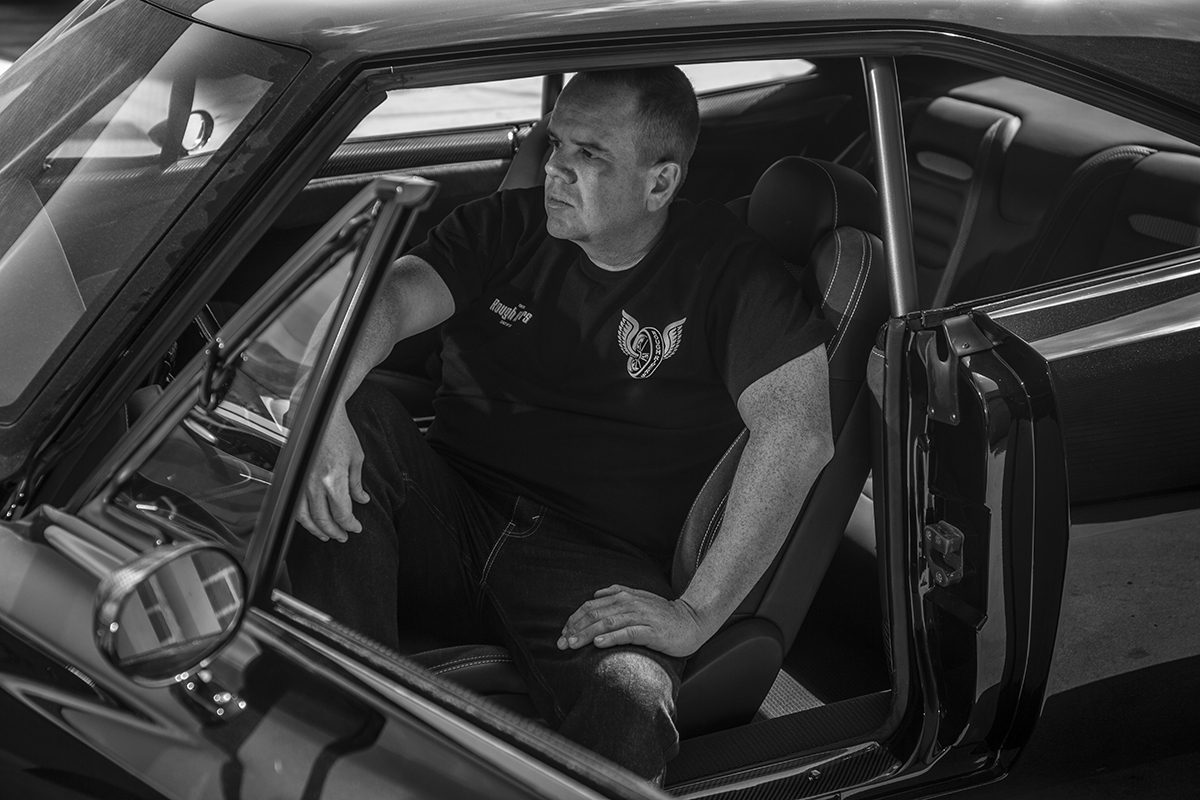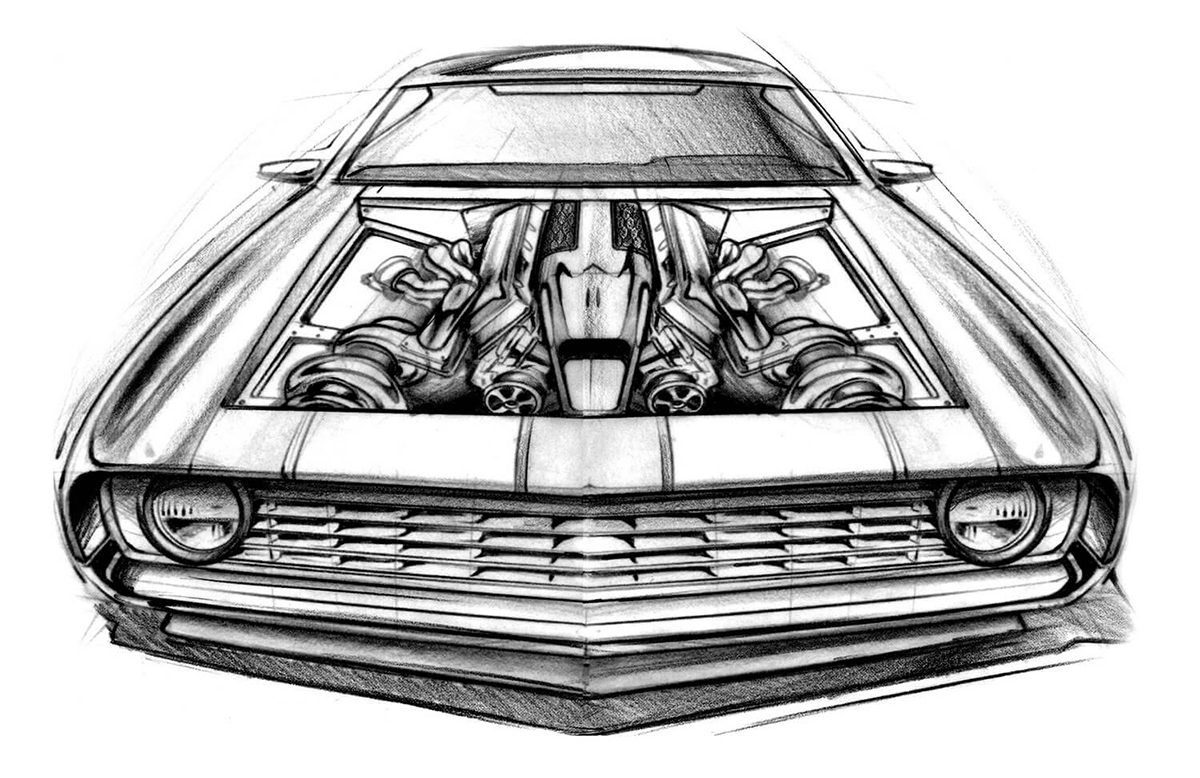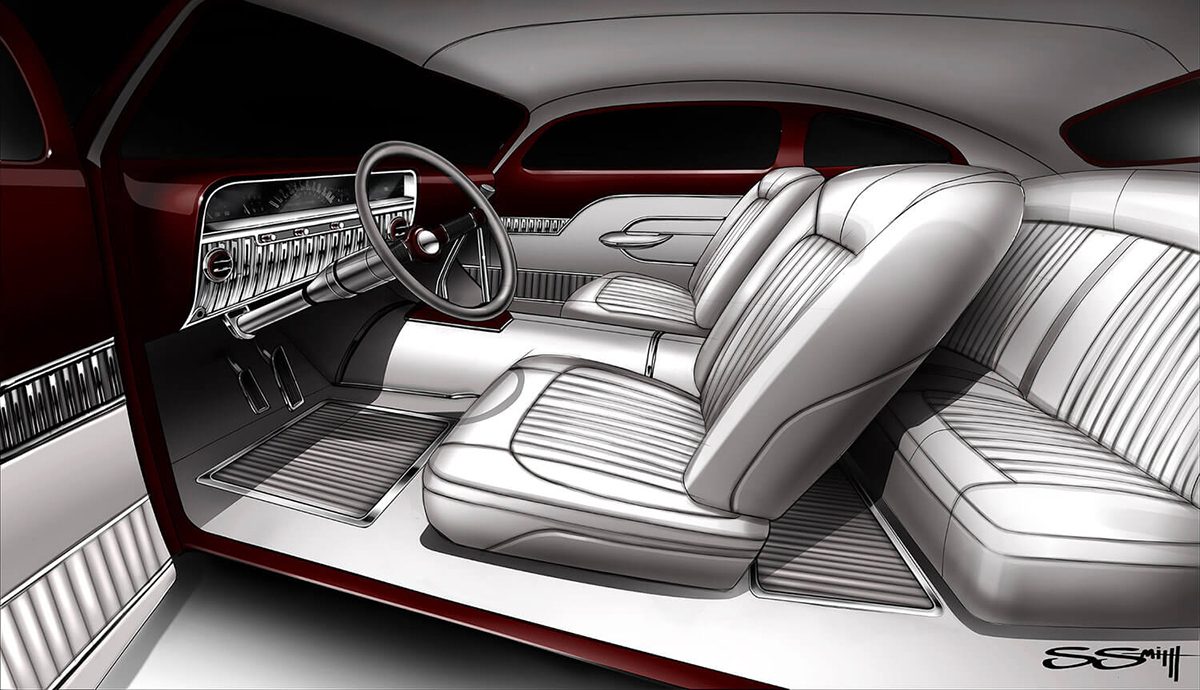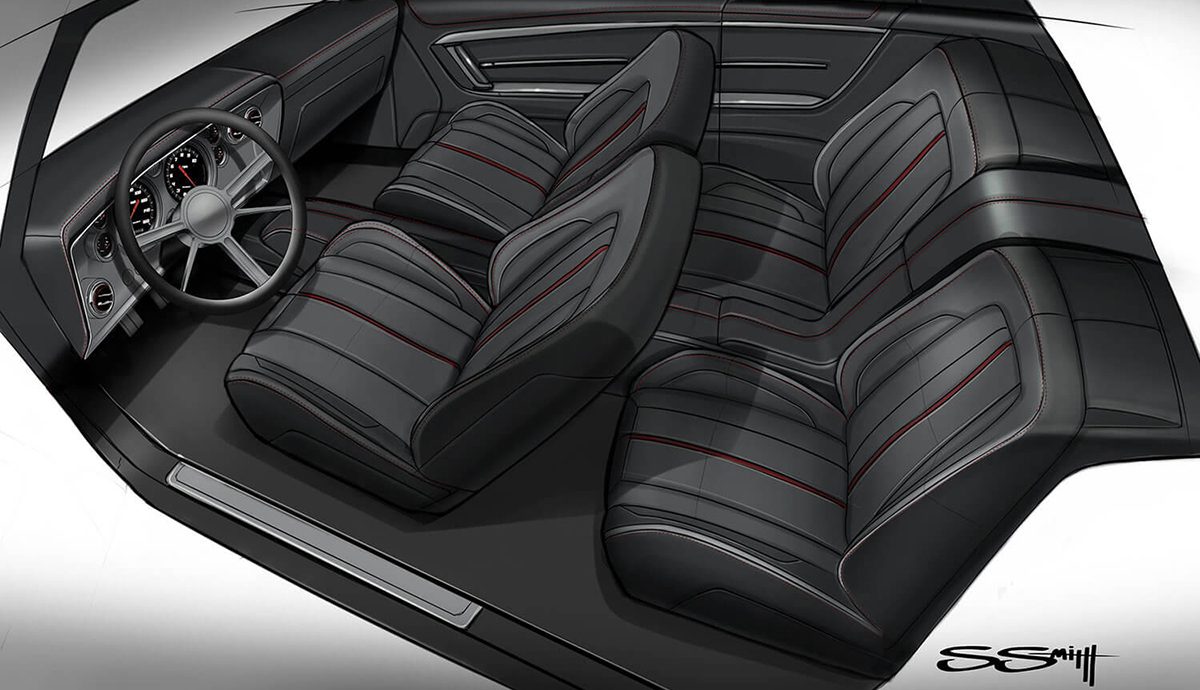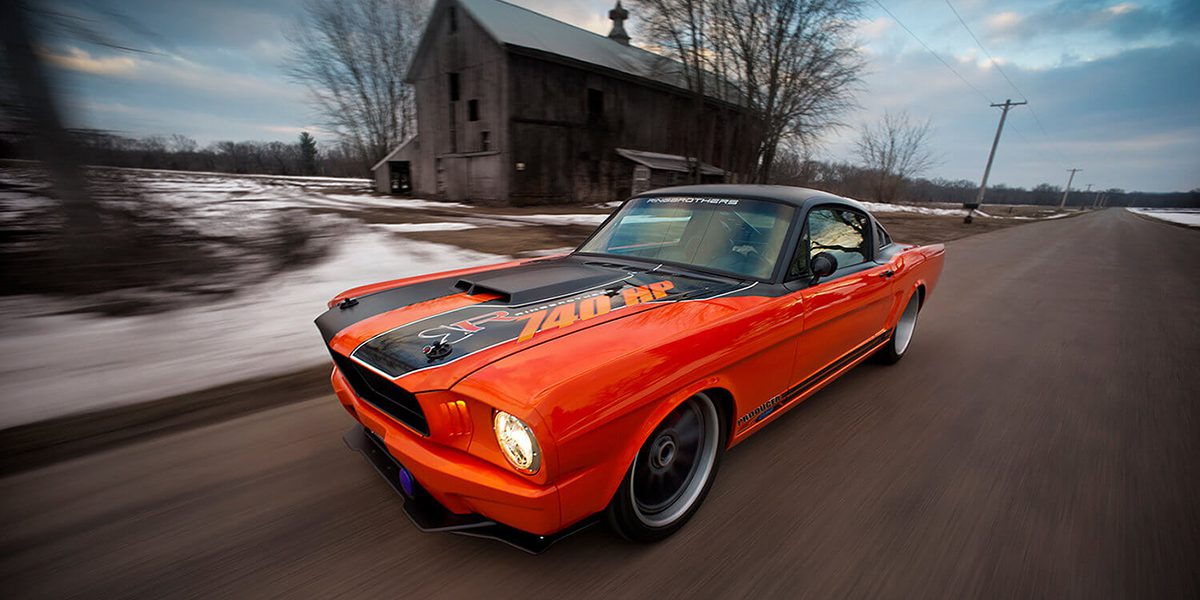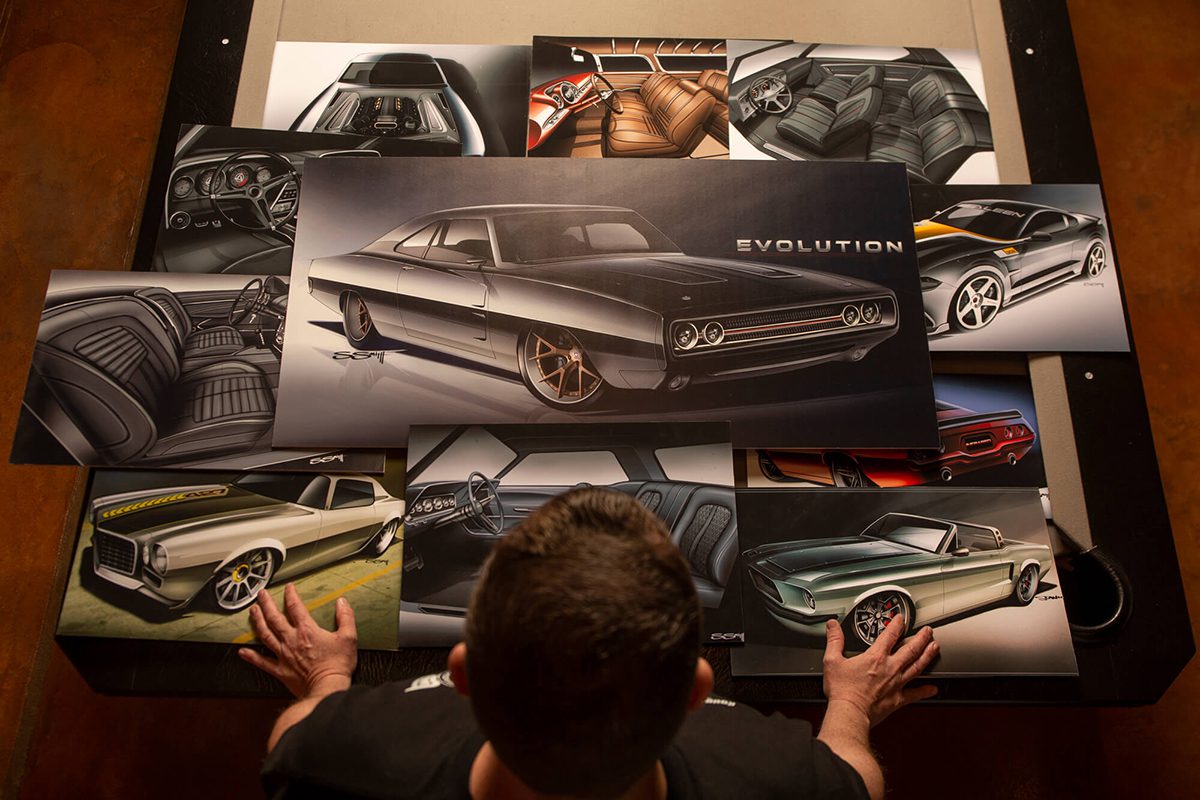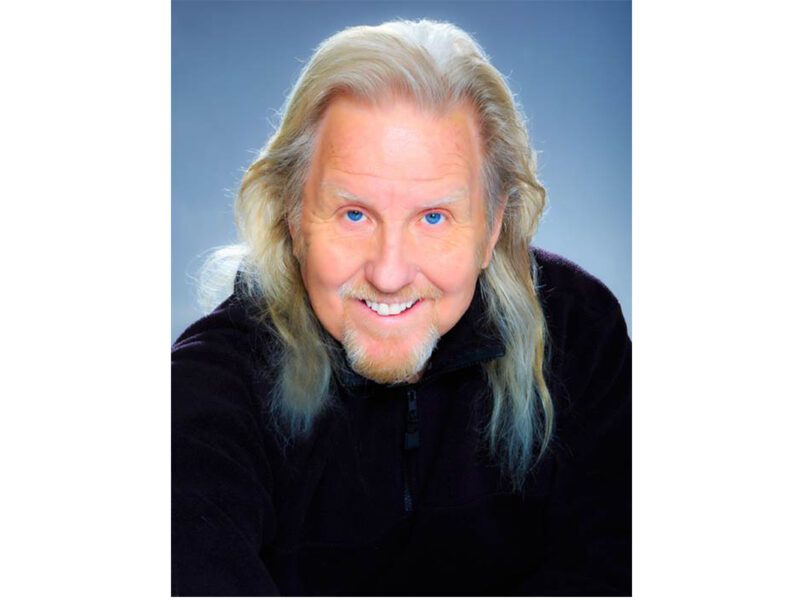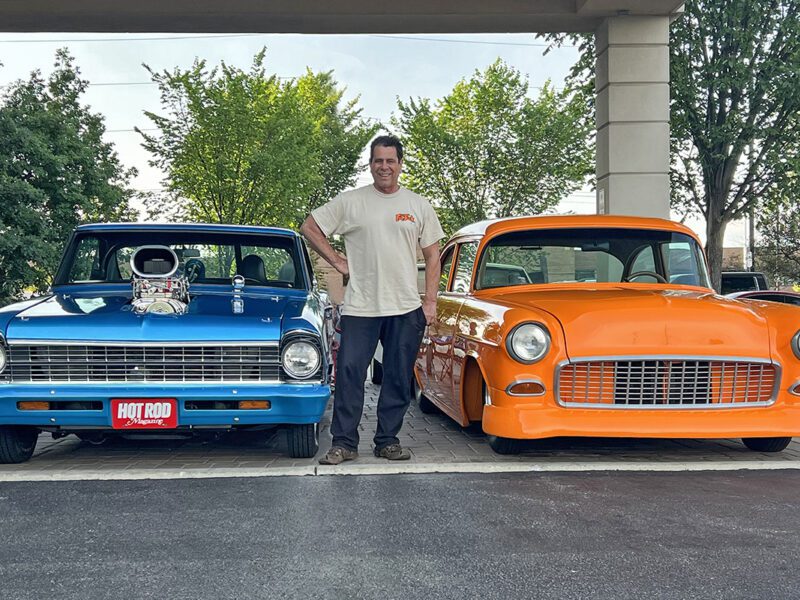5 Minutes With Sean Smith
If you liked the styling of the last two Goodguys Griot’s Garage Muscle Machine of the Year winners, then you’re already a fan of Sean Smith Designs. Sean played a major role in both Steve Aguilar’s ’71 Camaro, as well as Kevin Hart’s ’69 Road Runner.
Smith has been designing and creating for over 20 years, ranging from minute details and component design to overseeing entire builds and projects, including brands such as Saleen, Ringbrothers, and Speedkore. What started as fun sketches of cars when he was young took him to the Art Center College of Design, on a recommendation from Nike no less. A stint at Honda followed college, but Sean decided to strike out on his own to better fuel his creative process. Thus, Sean Smith Designs was formed – and he’s never looked back.
Goodguys: Walk us through the design process of a project vehicle.
Sean Smith: It can go a couple different ways. Some clients just need some renderings or basic elements of the car designed. Maybe they just want a hood design or paint scheme.
What I prefer is to take the role of a creative project manager. I work with the car owner and builder in formulating an overall concept for the project, including a story or theme. Next is the 2D sketches and interior and exterior renderings. Once those are finalized, I will oversee every aspect of the car creatively, working with digital scanners, modelers, interior shops, wheel vendors, metal fabricators, etc. This process isn’t for everyone, but the successful high-caliber builds today are done this way. The car needs more than just a rendering, but a creative team that can visually communicate the parts or modifications needing to be executed.
GG: Do you visit the shop during the build once the design is accepted?
Smith: I do. Generally, I average about three phone calls a day with builders back east. I fly out to my main Midwest shop, Salvaggio Design, every three to five months, or Dave comes out here. I visit West Coast shops multiple times a month depending on the stage of the car. Some shops I’m at every day. I’m also part of the debut. Big builds get big debuts, so we design the display and the clothing the team will wear. I also work with videographers, photographers, and marketing agencies to get the assets needed for the debut.
GG: How do you balance incorporating modern elements on an old canvas (the car)?
Smith: It depends on the car and the style. These days I think cleaner and timeless is better. But there are times when things need to be pushed very progressive. The trend I have seen the past 10 years is a lot of carbon fiber and performance elements on ’60s–’70s muscle cars. People want a better, tighter version of the classic look. Street rods went the same path. You had the smoothie polished billet look of the ’80s and ’90s, then it got so wild people scaled it back and went back to the classic look.
GG: Which do you enjoy more; the overall vehicle design or the small details?
Smith: I enjoy both. The overall proportion and silhouette are what captivates you to walk over and look at a car. The details and intricate parts keep you visually compelled
GG: Who were your early art and illustration influences?
Smith: My mom was a very creative person and helped me early on when I was frustrated learning to draw as a kid. Later in life I had some good art teachers. Going through Art Center was an amazing time. All my instructors were industry professionals, people like Ken Okuyama from Ferrari and Dave Marek who is head of design at Honda and Acura. Ian Cartabiano who is a design boss at Toyota Lexus, taught me a lot about sketching and rendering. And of course, Mike Desmond who still influences my work.
I still have a few people I talk to, such as Ken Sayward from Singer. We met at Mazda and he has taught me a lot about industry. A huge part of design goes further than a nice sketch. It’s learning to work with different people and communicate what can be done or not, and learning to put egos aside and come up with a solution which is best for the car.
GG: Any advice for up-and-coming artists?
Smith: Draw. Learn to draw a lot. And sketch a lot. If you’re not good at sketching, consider other aspects of design that aren’t based too much on 2D sketching, like clay modeling or engineering. Don’t get caught up in computer software at first. Learn the fundamentals and go from there.
GG: Do you have general design cues to share with a DIY hot rodder?
Smith: First, don’t paint your car Nardo gray like everyone is doing now. I say that jokingly, but not really. It’s great for Porsches and Audis, but it’s overdone on custom cars. I used it back in 2011 with Ringbrothers on a Mustang. It went over well but that was almost 13 years ago.
On a more serious note, you don’t have to spend a lot of money to get a clean car. For me, stance is the most important element of a car’s build. A good stance and wheel-and-tire combo is key. It doesn’t need to be expensive. Could be a set of Moon discs or American Torq Thrusts. If you can’t afford a new paint job, have a paint correction specialist or high-end detailer clean the car up and let the patina be the character of the car.
GG: Thoughts on CNC/3D printing or AI technology in the creative process?
Smith: I think CNC machining and 3D printing are great. You can use them as tools and execute good designs. The communication process from designer to builder is great. And if the part gets damaged you have the assets to remake it. AI I am not so sure about…the thought of it scares me to be honest.
Photos courtesy Sean Smith

